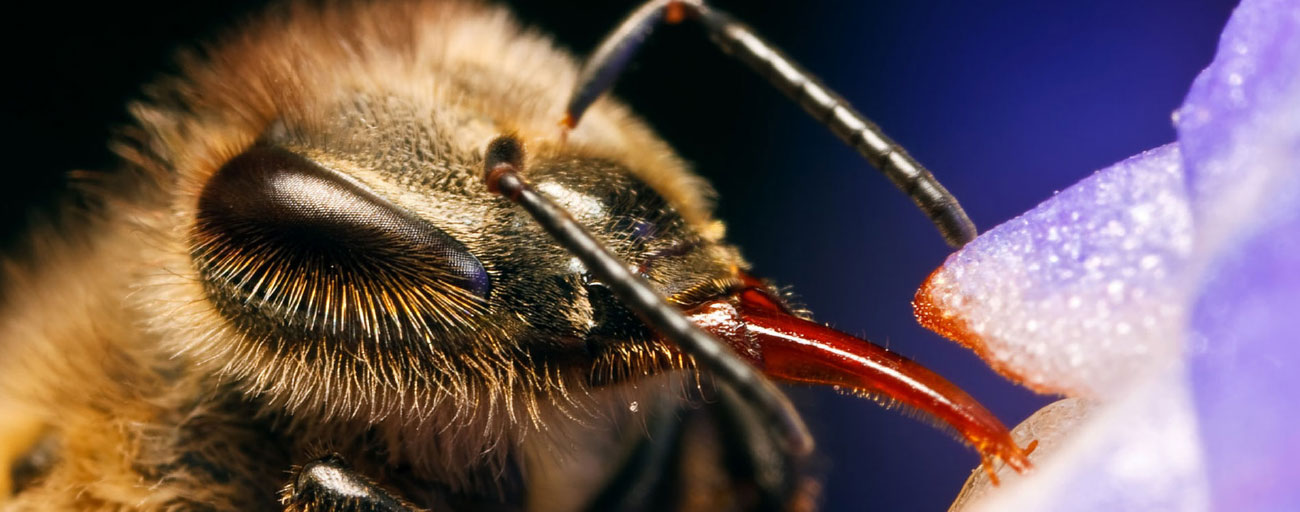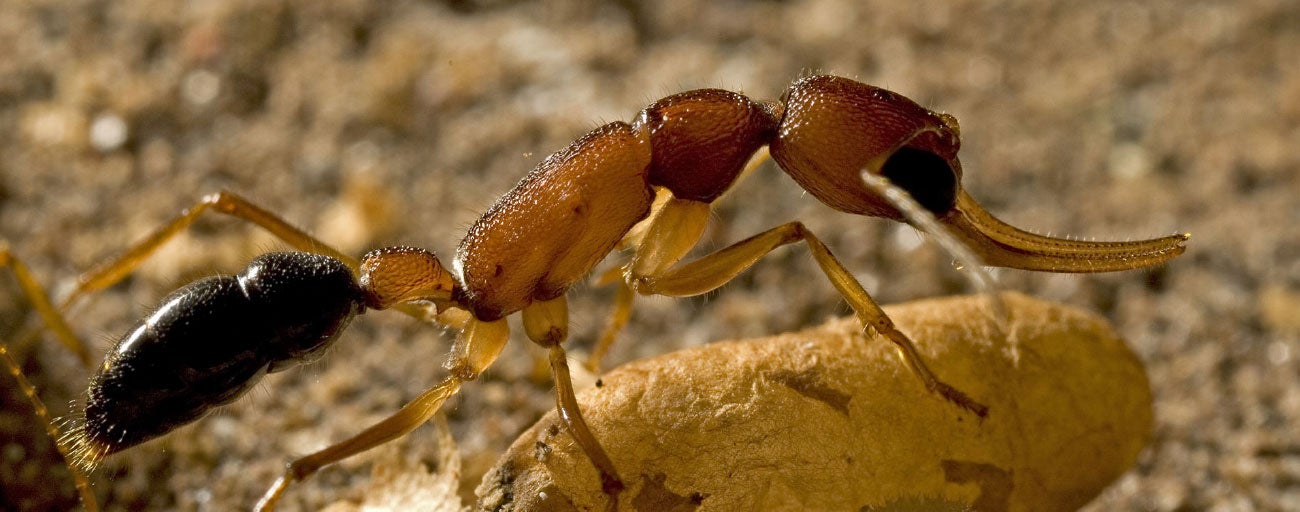
Social Insect Research Group
Arizona State University’s social insect research group (SIRG) studies the evolution and organization of insect societies from the level of the gene up to their ecology and evolution. Our research includes mechanistic studies of the neural and biochemical foundations of behavior and physiology, examined through questions aimed at understanding the evolution of social behavior.
The fundamental questions we ask include:
- Why and how does sociality evolve?
- What genes and mechanisms explain diversity in social animals, within and across species?
- How does self-organization contribute to social evolution?
- How does the central nervous system develop and change with experience?
Our research group combines classical behavioral and ecological approaches with a wide range of cutting-edge techniques at all levels of biological organization, including:
- bio-imaging
- computer simulations
- electrophysiology
- epigenetics
- gas chromatography/mass spectrometry
- genomics
- metabolomics
- transcriptomics
We have a vibrant research environment, with ten core faculty and several affiliated faculty, as well as postdocs, graduate students and undergraduates all conducting research. SIRG faculty and students meet weekly to discuss ongoing projects and hear presentations from leading scientists from around the world.
Our diverse field projects occur internationally from the tropics of central and South America, to the rangelands of Asia and throughout the western U.S. These projects focus on the incredible diversity of social insect species in the desert Southwest.
Graduate students with the social insect research group regularly receive National Science Foundation graduate research fellowships, doctoral improvement grants, and major research honors such as the Eickwort award. Our graduate students are enrolled in PhD programs in animal behavior, biology, evolutionary biology and neuroscience.
You will see publications from SIRG members regularly appear in journals such as SCIENCE, NATURE, PNAS, PLOS Biology, Current Biology and Proceedings of the Royal Society B.

- Aging
- Behavioral Neuroscience
- Bioimaging
- Electrophysiology
- Biomimicry
- Caste determination
- Climate change
- Complexity and self-organization
- Communication
- Cooperation and conflict
- Decision-making
- Division of labor
- Ecology of desert ants
- Environmental contaminants/toxicology
- Epigenetics
- Evolutionary ecology
- Learning & memory
- Metabolism/metabolomics
- Phenotypic plasticity
- Scaling
- Social evolution
- Social physiology
- Sociogenomics
- Toxicology and stress (pesticides, fungicides, heavy metals, temperature)
- Agent-based models (and mean field modeling)
- Automated video analysis
- Behavioral experimentation
- Cell visualization techniques
- Computational neuroscience
- Gas chromatography/mass spectrometry
- Genotyping for paternity
- Histology and tomography
- Linkage mapping
- Locomotion kinematics/high speed video
- Metabolic rate/metabolomics
- QTL analyses
- RNAi
- RNAseq
- Single sensillum recording
- Standard molecular genetic tools
Social insects
- Acromyrmex
- Apis mellifera, cerana, florea, dorsata
- Aphaenogaster (=Novomessor)
- Azteka
- Camponotus
- Harpegnathos
- Messor
- Pogonomyrmex
- Stingless bees
- Temnothorax
- Veromessor
- Zootermopsis
- Plus others
Solitary insects
- Beetles
- Nasonia
- Drosophila
- Locust
The Art of the Bee: Shaping the Environment from
Landscapes to Societies
On this YouTube channel, Professor Emeritus Robert Page, Arizona State University, brings to you the fascinating world of bees. The impact of bees on our planet is immeasurable. Bees are responsible for the evolution of the vast array of brightly colored flowers and for engineering the niches of multitudes of plants, animals, and microbes. They’ve painted our landscapes with flowers through their pollination activities and have evolved the most complex societies to build and exploit the environment. The biology of the honey bee is one that reflects their role in transforming environments with their anatomical adaptations and a complex language that together function to harvest floral resources. A social system that includes a division of labour builds, defends, and provisions nests containing tens of thousands of individuals, only one of whom reproduces. This YouTube channel series presents fundamental biology, not in organizational layers, but wrapped around interesting themes and concepts, and in ways designed to explore and understand each concept. It examines the coevolution of bees and flowering plants, bees as engineers of the environment, the evolution of sociality, the honey bee as a superorganism and how it evolves and the mating behavior of the queen. The content here is derived from "The Art of the Bee: Shaping the Environment from Landscapes to Societies," Oxford University Press. Different segments reflect different chapters of the book, though there is not a one-to-one correspondence.